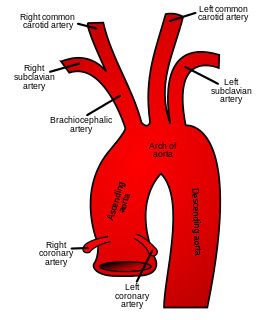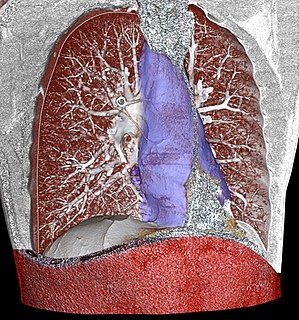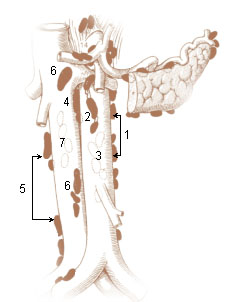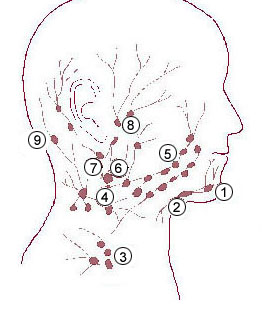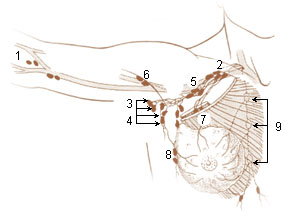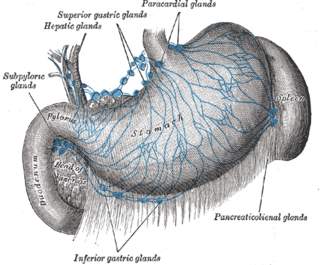| Superior diaphragmatic lymph nodes | |
|---|---|
| Details | |
| Identifiers | |
| Latin | nodi lymphoidei phrenici superiores |
The superior diaphragmatic lymph nodes lie on the thoracic aspect of the diaphragm, and consist of three sets – anterior, middle, and posterior.
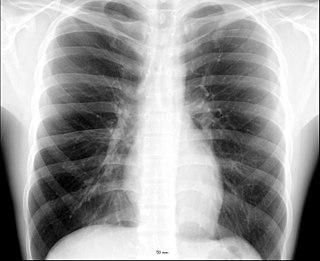
The thorax or chest is a part of the anatomy of humans and various other animals located between the neck and the abdomen. The thorax includes the thoracic cavity and the thoracic wall. It contains organs including the heart, lungs, and thymus gland, as well as muscles and various other internal structures. Many diseases may affect the chest, and one of the most common symptoms is chest pain.
- The anterior set comprises (a) two or three small nodes behind the base of the xiphoid process, which receive afferents from the convex surface of the liver, and (b) one or two nodes on either side near the junction of the seventh rib with its cartilage, which receive lymphatic vessels from the front part of the diaphragm. The efferent vessels of the anterior set pass to the parasternal lymph nodes.
- The middle set consists of two or three nodes on either side close to where the phrenic nerves enter the diaphragm. On the right side some of the lymph nodes of this group lie within the fibrous sac of the pericardium, on the front of the termination of the inferior vena cava. The afferents of this set are derived from the middle part of the diaphragm, those on the right side also receiving afferents from the convex surface of the liver. Their efferents pass to the posterior mediastinal lymph nodes.
- The posterior set consists of a few nodes situated on the back of the crura of the diaphragm, and connected on one side with the lumbar lymph nodes and on the other with the posterior mediastinal nodes.

The xiphoid process, or xiphisternum or metasternum, is a small cartilaginous process (extension) of the lower (inferior) part of the sternum, which is usually ossified in the adult human. It may also be referred to as the ensiform process. Both the Greek derived xiphoid and its Latin equivalent ensiform mean 'swordlike'.

The liver, an organ only found in vertebrates, detoxifies various metabolites, synthesizes proteins, and produces biochemicals necessary for digestion. In humans, it is located in the right upper quadrant of the abdomen, below the diaphragm. Its other roles in metabolism include the regulation of glycogen storage, decomposition of red blood cells and the production of hormones.

The lymphatic vessels are thin-walled vessels (tubes) structured like blood vessels, that carry lymph. As part of the lymphatic system, lymph vessels are complementary to the cardiovascular system. Lymph vessels are lined by endothelial cells, and have a thin layer of smooth muscle, and adventitia that bind the lymph vessels to the surrounding tissue. Lymph vessels are devoted to the propulsion of the lymph from the lymph capillaries, which are mainly concerned with absorption of interstitial fluid from the tissues. Lymph capillaries are slightly larger than their counterpart capillaries of the vascular system. Lymph vessels that carry lymph to a lymph node are called afferent lymph vessels, and those that carry it from a lymph node are called efferent lymph vessels, from where the lymph may travel to another lymph node, may be returned to a vein, or may travel to a larger lymph duct. Lymph ducts drain the lymph into one of the subclavian veins and thus return it to general circulation.

